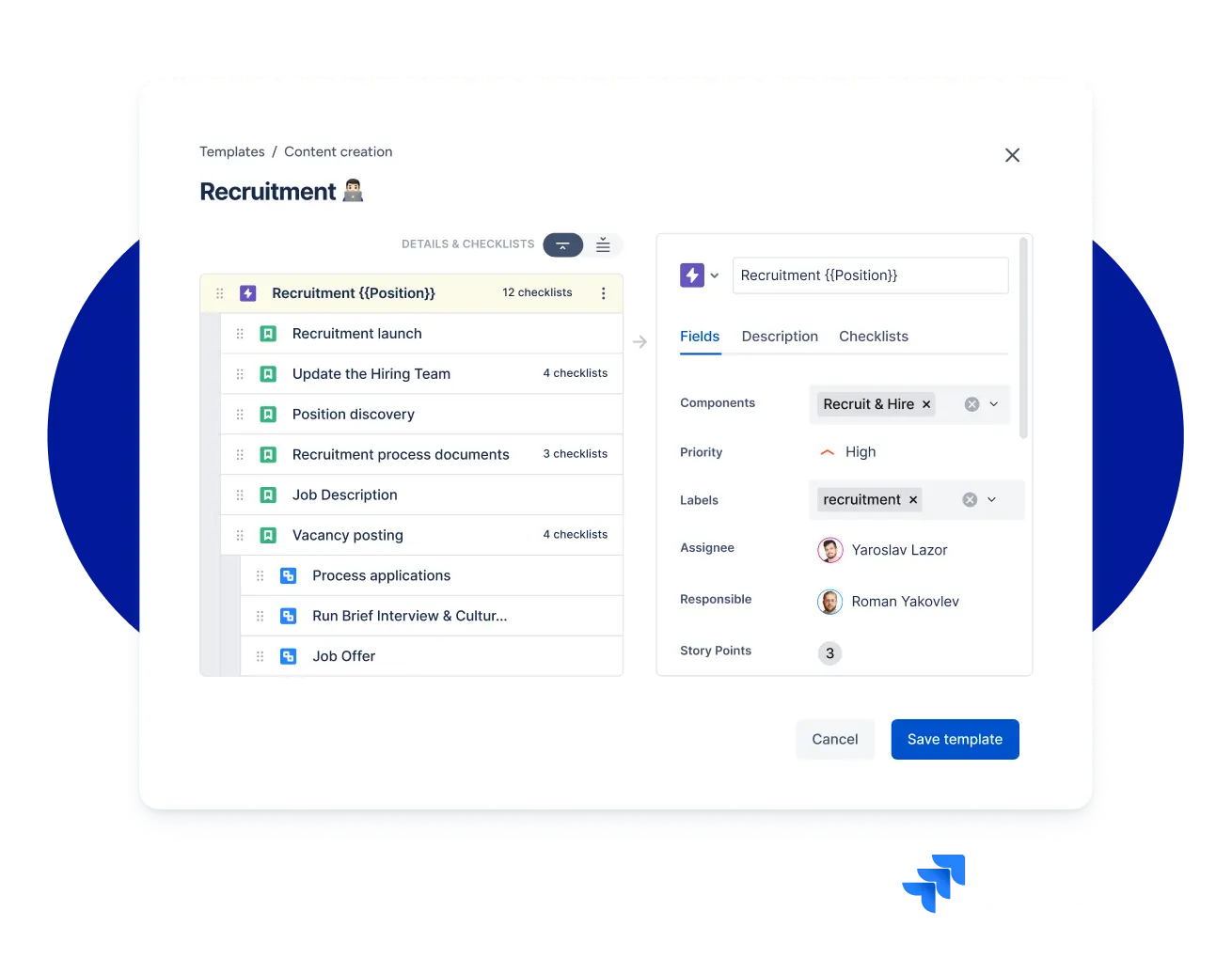Active users
Runs on Atlassian
Cloud Fortified
Gold Marketplace Partner
With Smart Templates you can
Create templates for any work (issue) type from scratch, or save existing Jira tickets as a template
Customize every detail in your template. Pre-fill work item (issue) fields, add variables, and schedule work items creation
Manage dynamic values with variables. Add automatically calculated due dates. Dynamically assign responsible
Schedule work items creation with Template Scheduler. Automate tasks creation
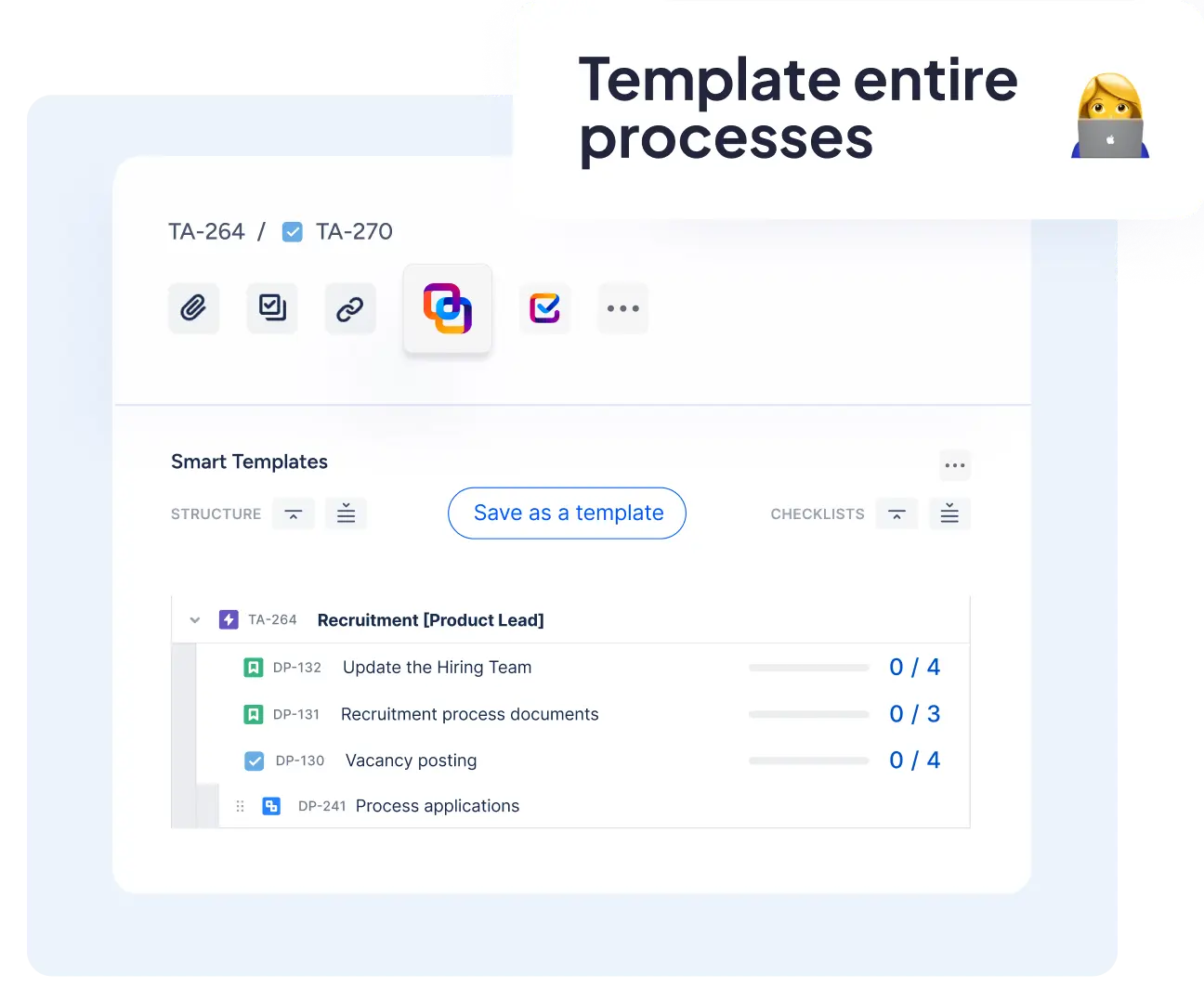
Create once, reuse everywhere
No more work items (issue) cloning, data copypasting, and forgetting to add important details. Save any work type like epic, story, or bug as a custom template and reuse it with your team.
Document and automate entire processes for all teams. Streamline the workflow with flexible variables and scheduler.
Optimize processes
with flexible templates
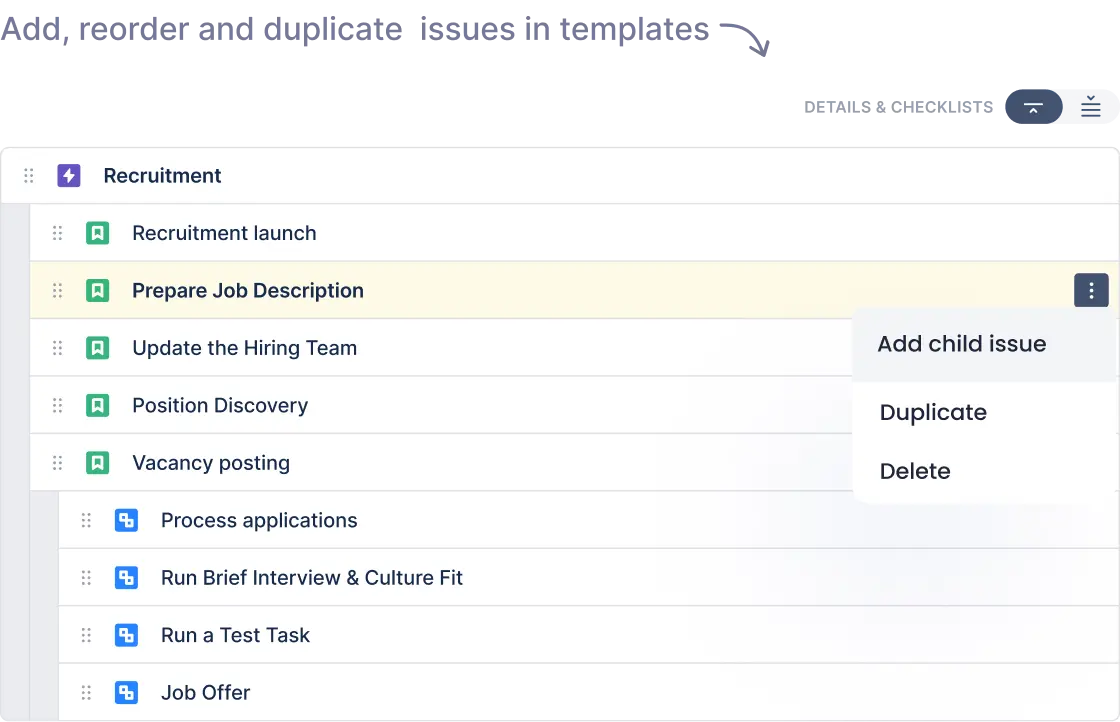
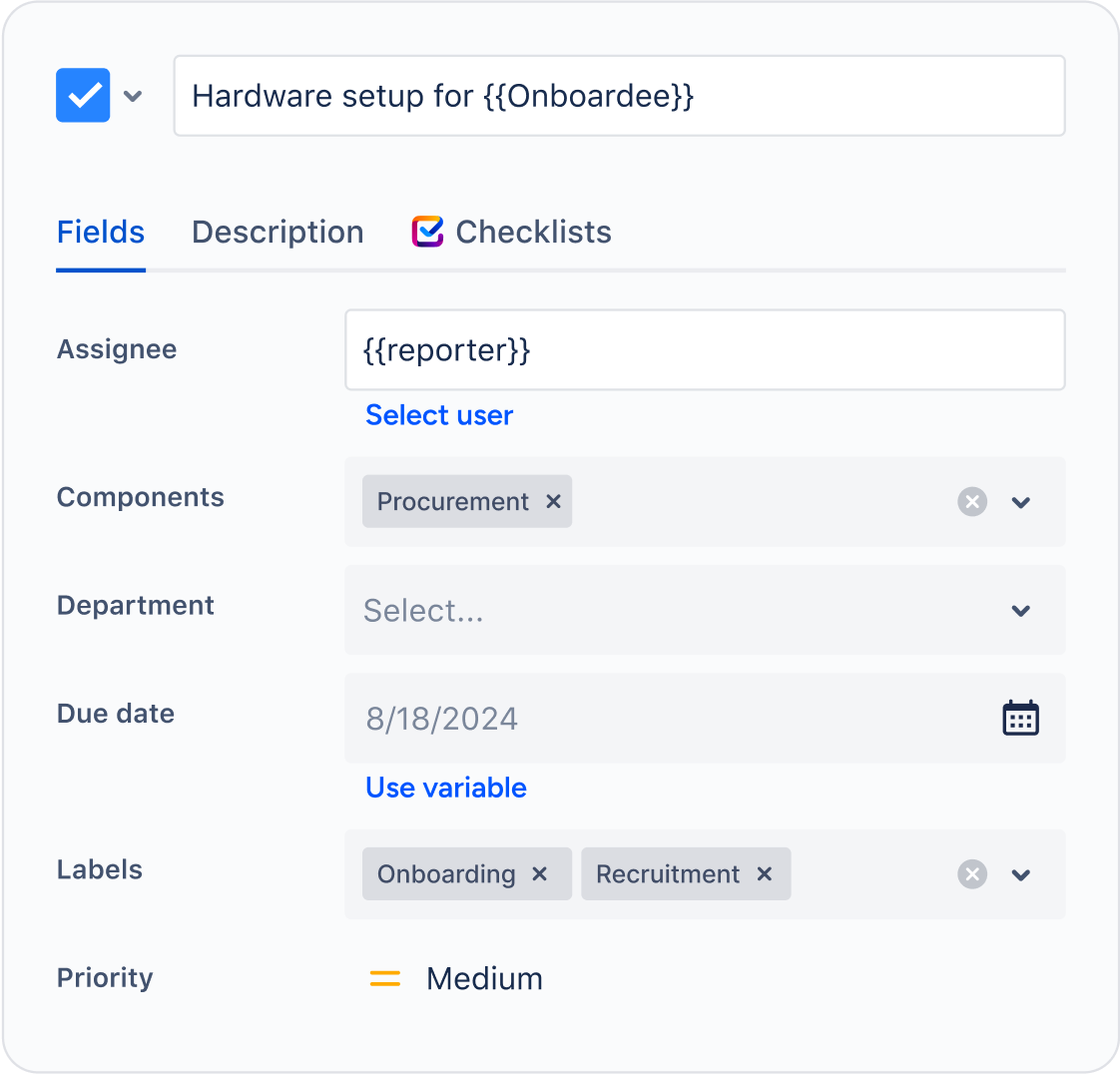
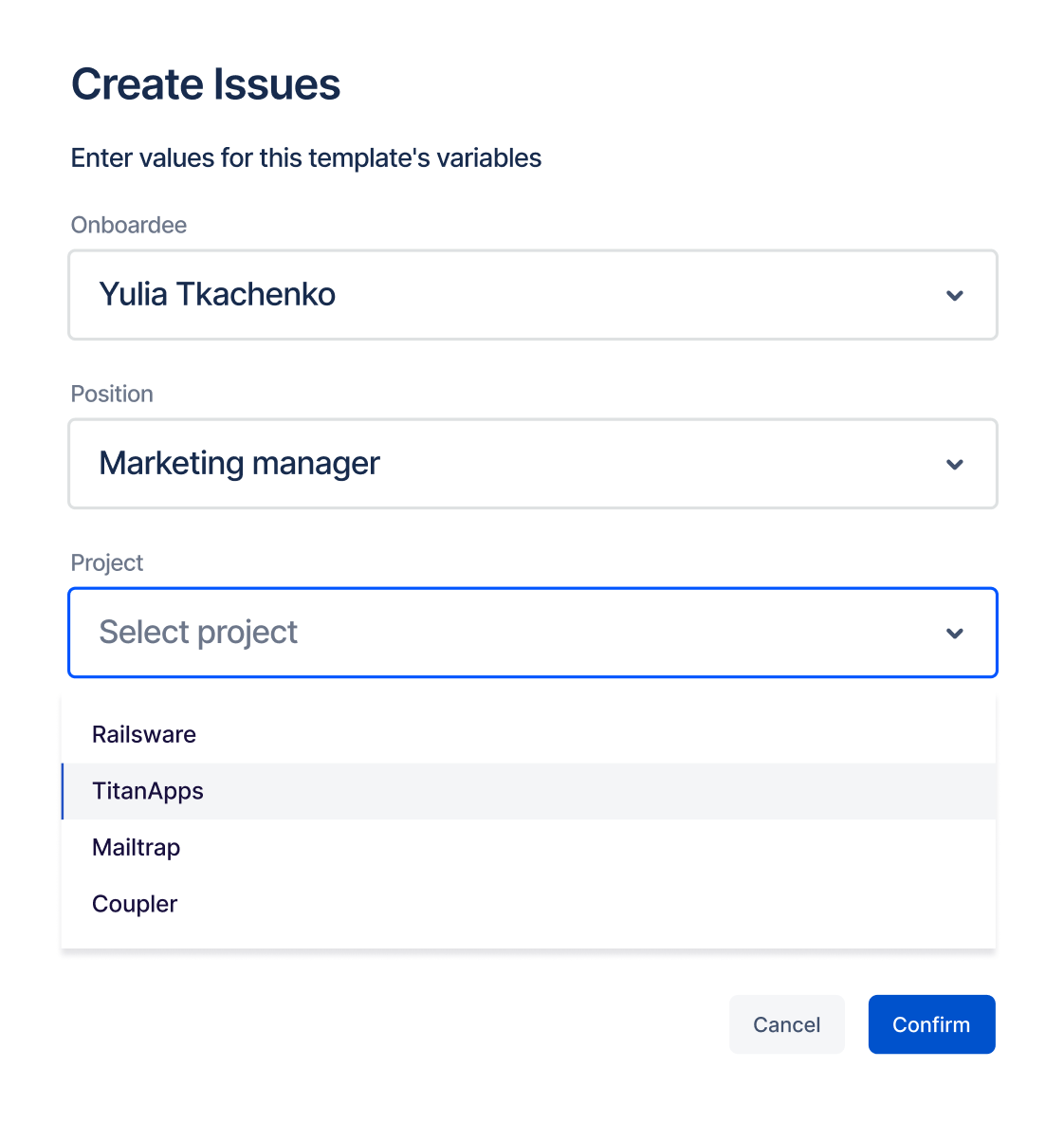
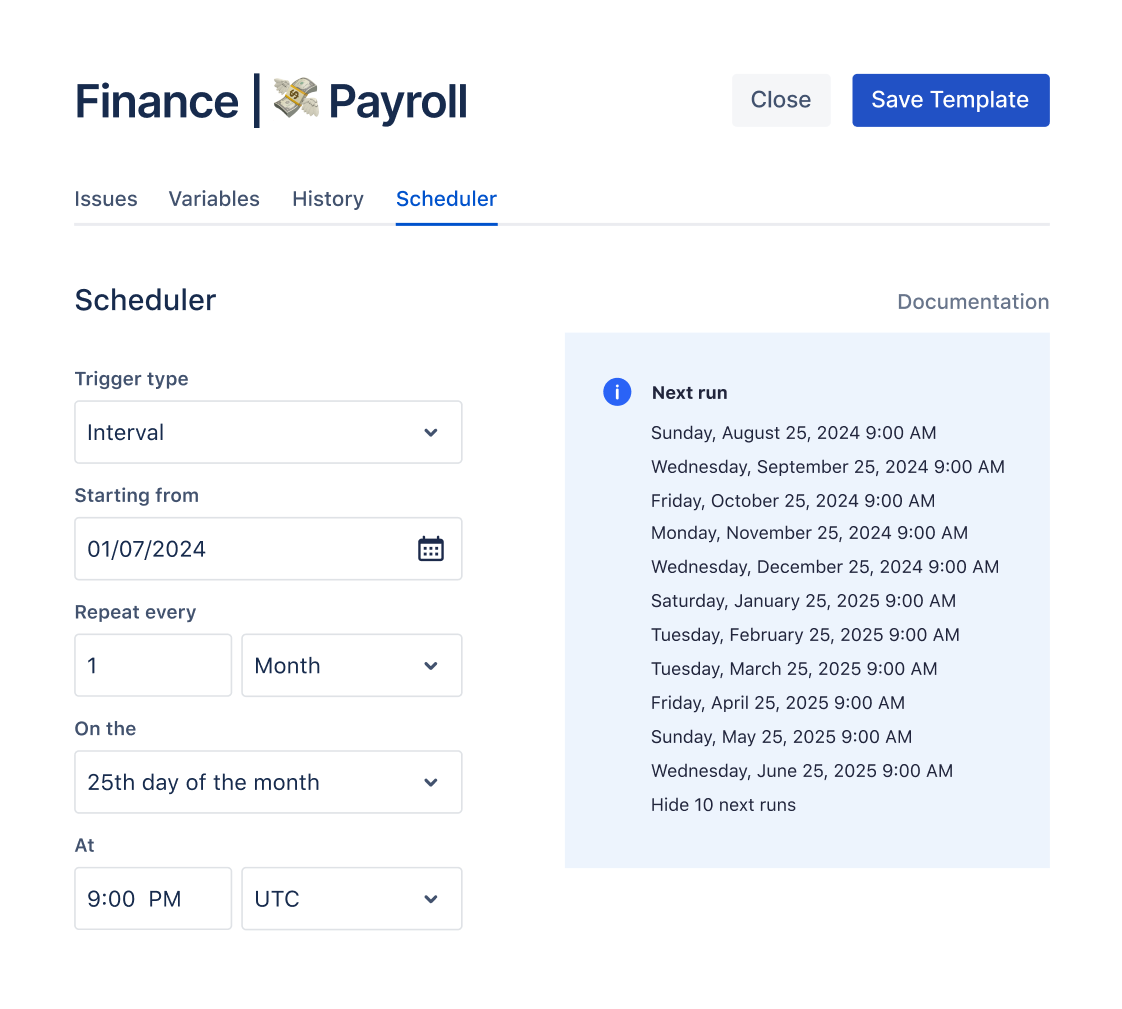

Help your teams become more productive with Smart Templates
IT and Engineering
Give your Engineering team peace of mind. Save well-defined processes as templates, including infrastructure setup, production release, bug report templates, and others.
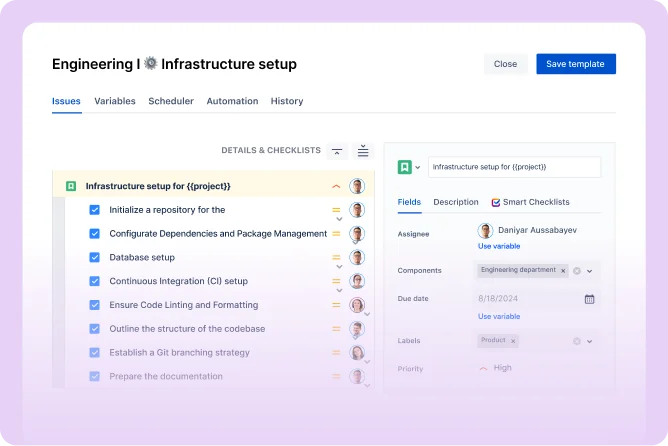
Product and Management
Free your Product team from routine and repetitive tasks with templates for product launch, feature release, annual stakeholder report, etc.
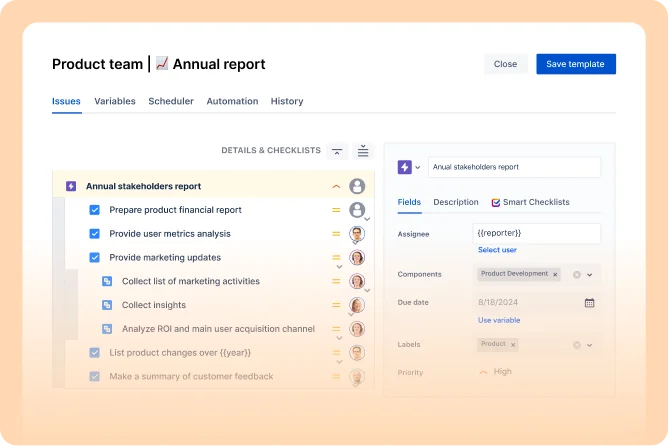
HR and Recruiting
Automatically apply templates to recruitment, onboarding, or event planning processes to maximize your HR team’s efficiency and reduce human error.
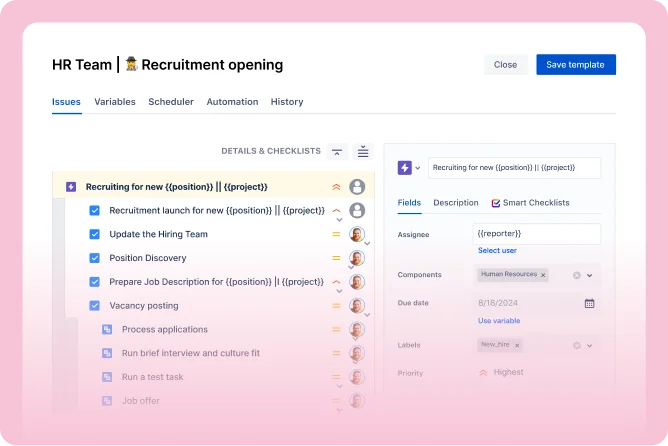
Marketing
Turn your Marketing team's tasks into step-by-step action plans using templates for go-to-market strategy, ad campaigns, or social media content plans.
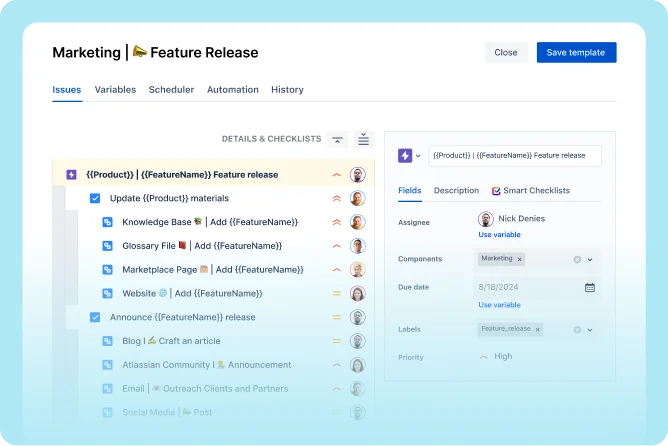
Finance
Forget about overdue payments and missed tax declarations. Enhance all Financial processes with templates for payroll process, tax preparation, month-end close, and more.
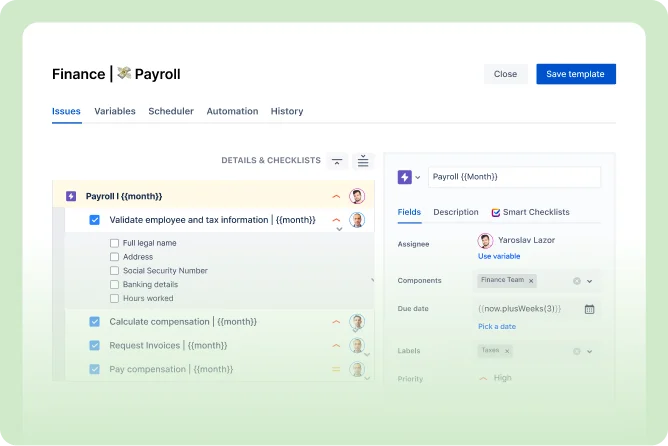
IT and Engineering
Give your Engineering team peace of mind. Save well-defined processes as templates, including infrastructure setup, production release, bug report templates, and others.
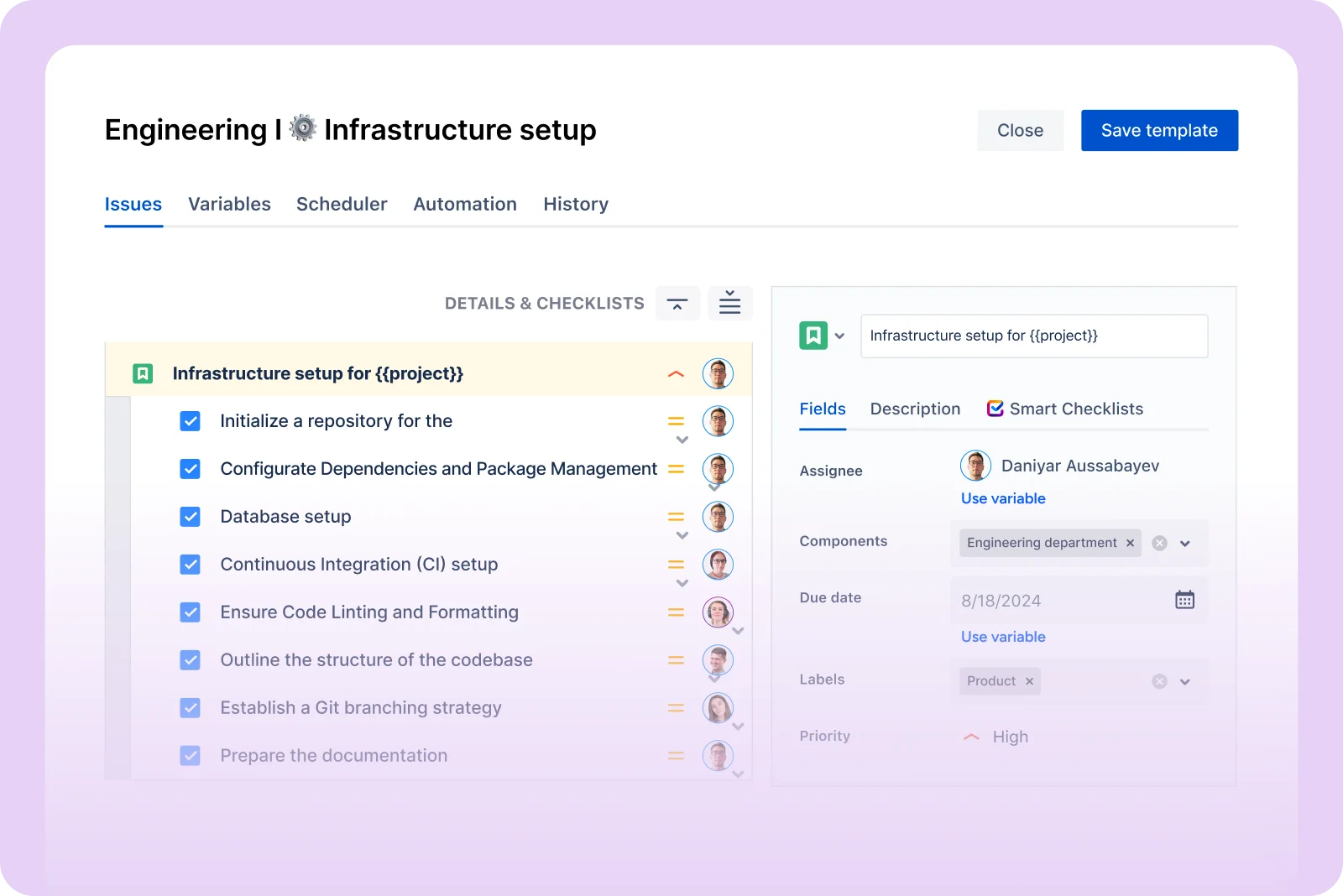
Product and Management
Free your Product team from routine and repetitive tasks with templates for product launch, feature release, annual stakeholder report, etc.
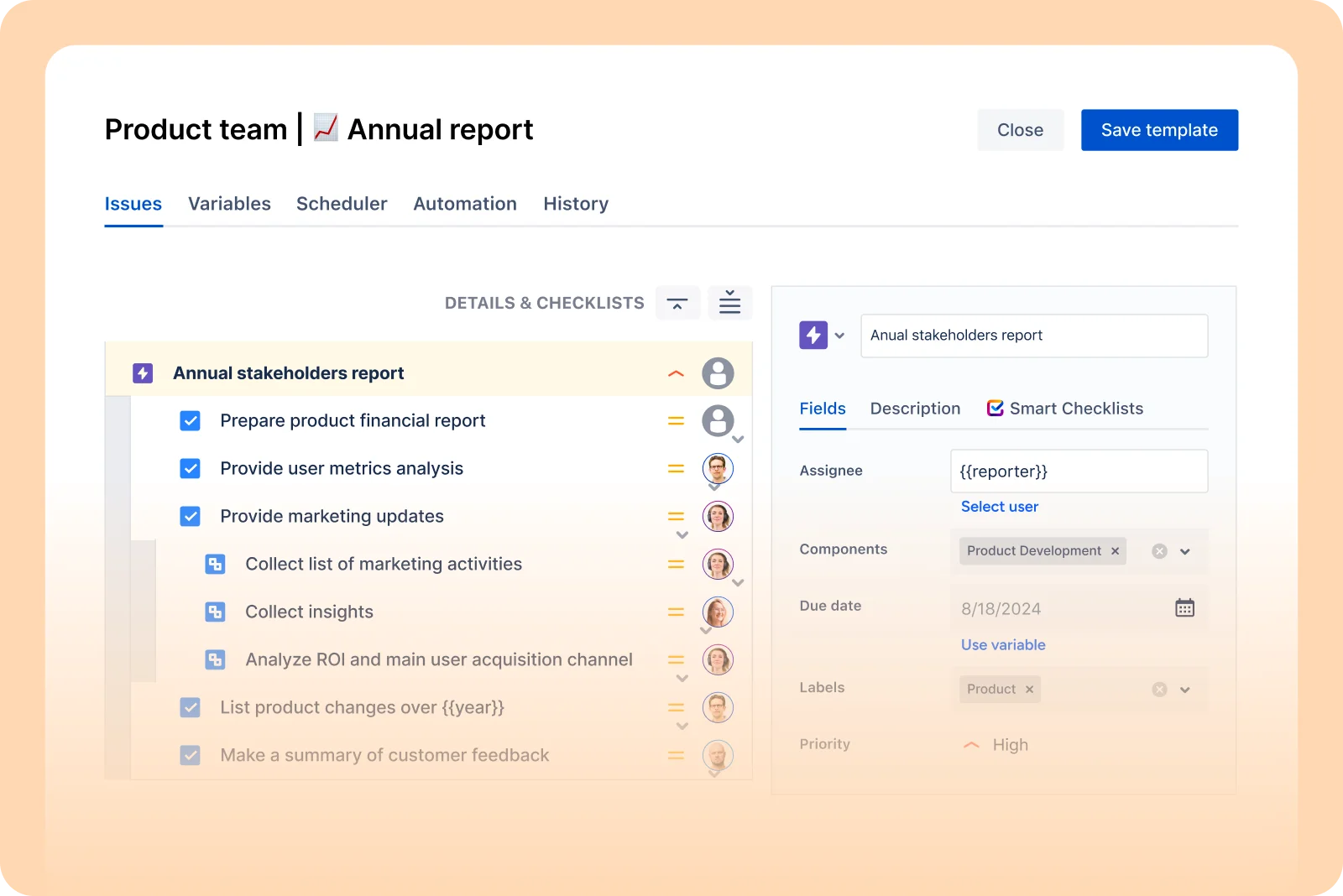
HR and Recruiting
Automatically apply templates to recruitment, onboarding, or event planning processes to maximize your HR team’s efficiency and reduce human error.
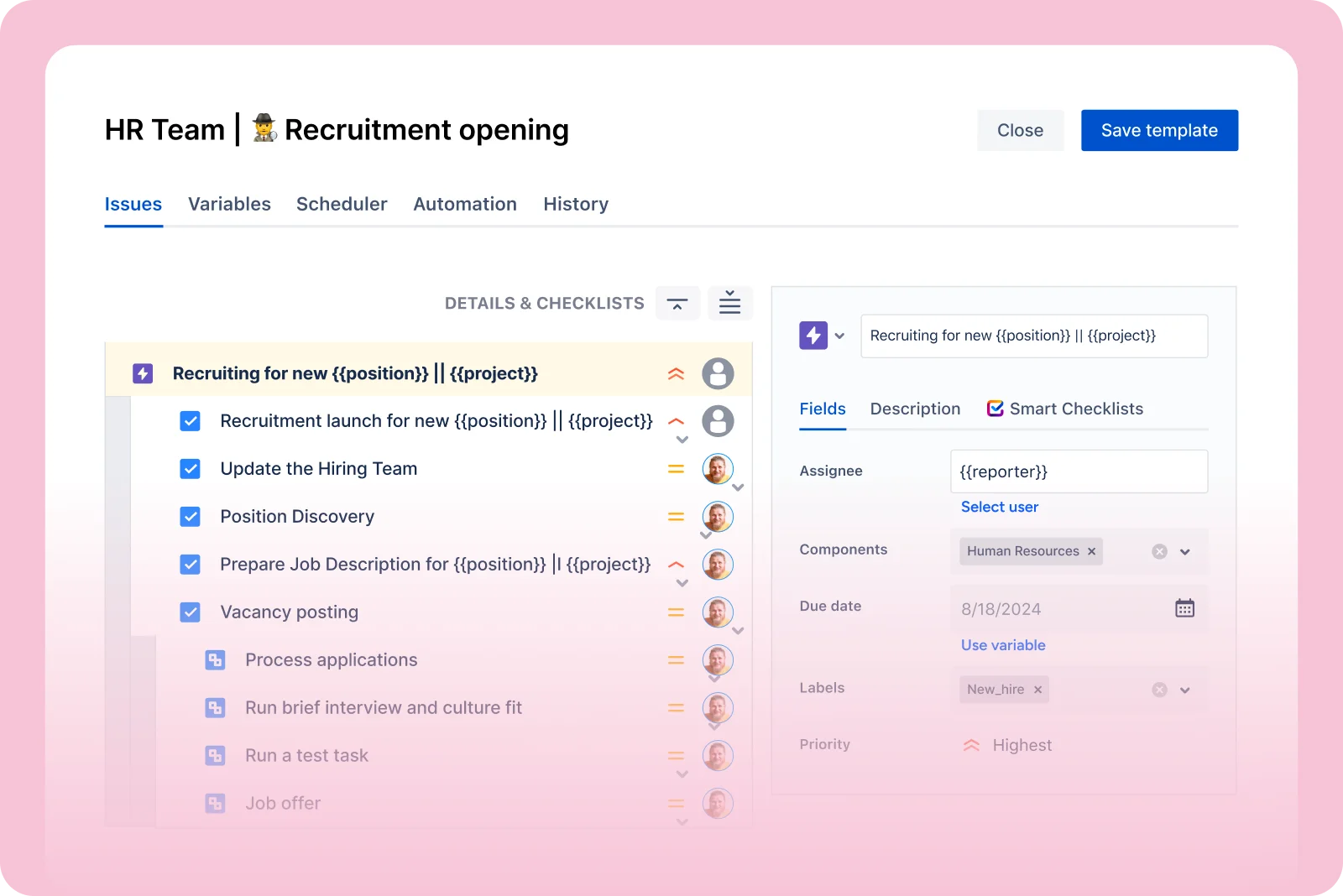
Marketing
Turn your Marketing team's tasks into step-by-step action plans using templates for go-to-market strategy, ad campaigns, or social media content plans.
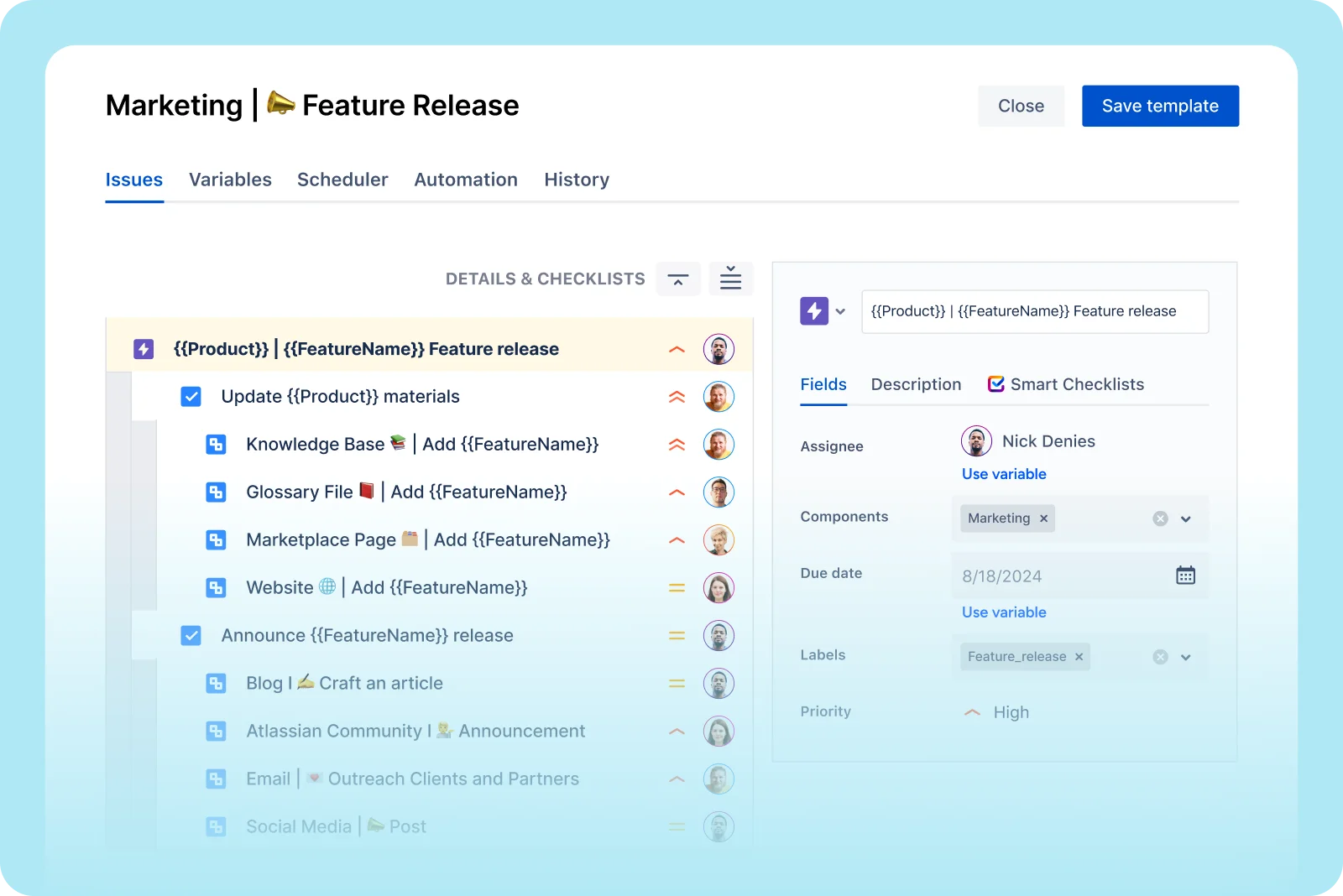
Finance
Forget about overdue payments and missed tax declarations. Enhance all Financial processes with templates for payroll process, tax preparation, month-end close, and more.
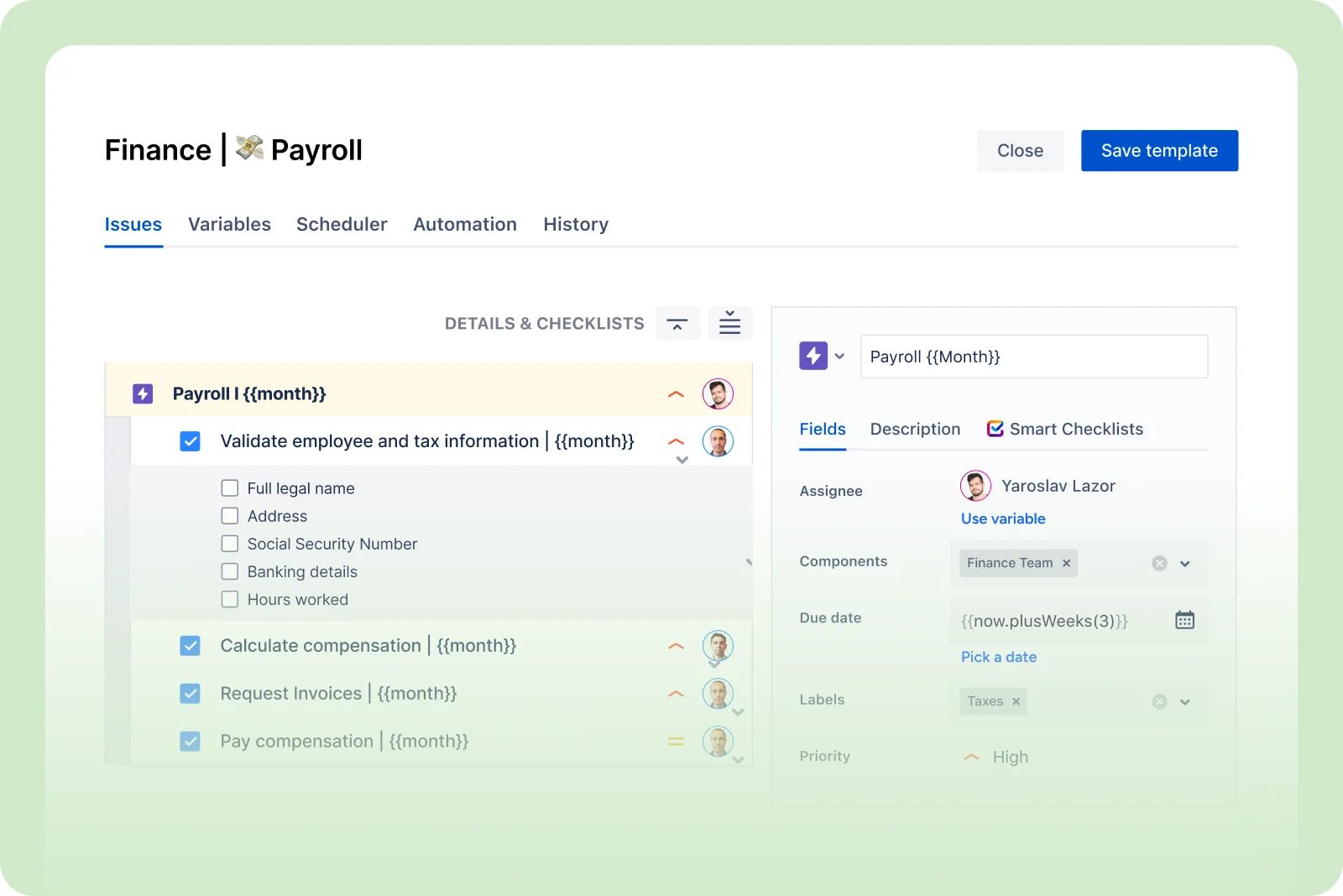
Ready to boost your team's productivity?


More Smart Tools - Less Manual Work
Add checklists to
your task templates
Learn more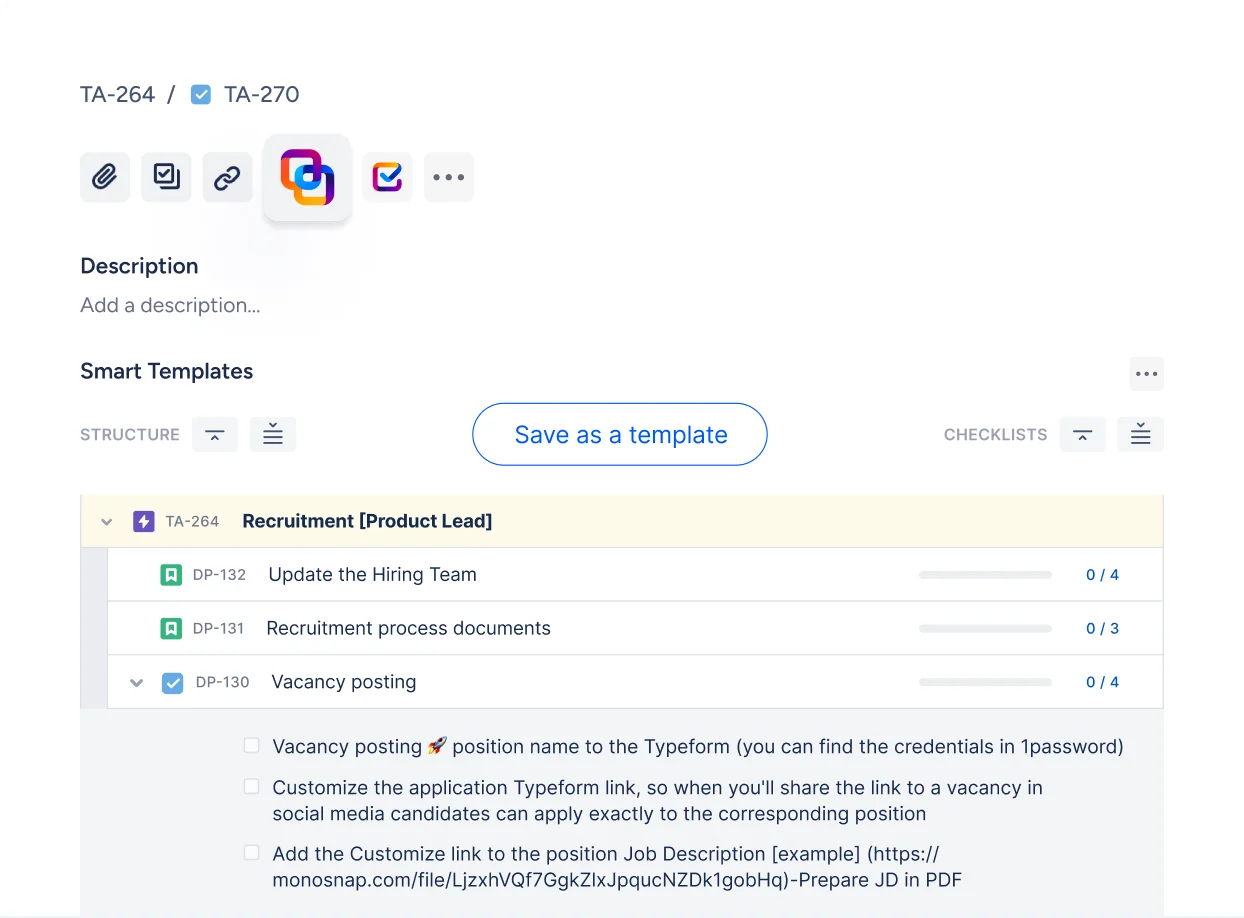
Frequently Asked Questions 🤔
Haven't found an answer? Try our blog or ask us directly via email
Smart Templates is a productivity tool designed to optimize team performance and establish company standards. With Smart Templates you can turn your repetitive processes into work item (issue) templates, pre-fill work item (issue) fields, add variables to manage dynamic values, and more. Just create a template once and reuse it anytime.
Teams use Smart Templates to turn repetitive processes into work item (issue) templates. Some of the most common use cases:
- HR | Recruiting
- Onboarding template
- Recruitment process
- Event organization template
- IT | Engineering
- Bug report template
- Releases
- Documentation and release notes template
- Product | Management
- Product onboarding
- Feature launch template
- Annual stakeholder report
- Marketing
- Content creation
- Campaign planning
- Briefs templates
- Finances
- Month-end close template
- Audit preparation
- Budget management
- Procurement
- Hardware purchase template
- Updating software
Sure! With having both Smart Checklist and Smart Templates apps installed, you can add checklists right to your work item (issue) templates! Learn more on how to add checklists to your work item templates here.
Pricing depends on the amount of users. You can check the pricing of Smart Templates for Jira Cloud here.
Yes, Smart Templates is available for both Jira Cloud and Data Center hosting types.
Yes, Smart Templates is GDPR compliant. You can learn more about our data privacy and security policy here.
